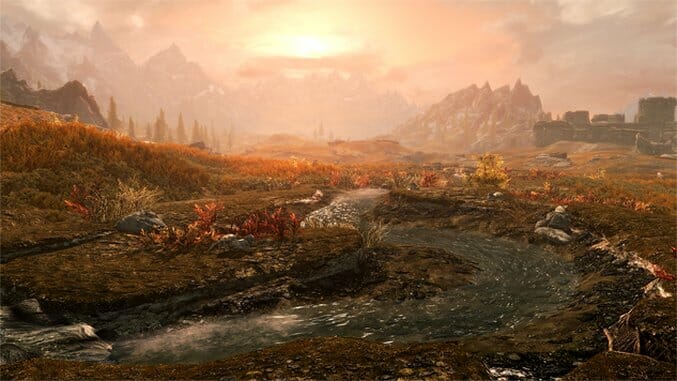Skyrim‘s Rigid Racial Divide Doesn’t Reflect Real Life
Photos courtesy Bethesda and Elder Scrolls Wikia
At the time of its release in 2011, The Elder Scrolls V: Skyrim was the pinnacle of role-playing games for the previous console generation, extending an invitation to the player to ‘live another life’ in a fully-realized, lifelike open world. And I, like so many millions around the world, accepted that invitation from Bethesda, and to date have put well over 1,000 hours into the game (and who knows how many more once I pick up the Special Edition re-release).
But unlike what other players may experience, in all the hundreds of hours I’ve put into Skyrim, I’ve never been able to fully replicate myself within the game. I can only live another life, in another person’s shoes. As a 21-year old living in England, my age is easy to replicate in a character creation menu. But with the limited categories for racial identity, I can’t even come close to representing my mixed race heritage.
As is customary with the Elder Scrolls series, the player is given the choice to customize their character at the very beginning of the game. There are a litany of options, including cosmetic additions like warpaint, all the way down to the shape of the eyebrows on their face. However, the player is only given a single option when it comes to the race of their character, presented with a variety of choices from the standard humanoid Imperials, all the way to the alien-like Argonians, and the cat-like Khajiit.
While the player might have paid little attention to their choice of race in the character creation menu, they’re forced to realize the gravity of their decision during their first journey to the Nord stronghold city of Windhelm. It is here that they first encounter the strong racial undercurrent of the game, as two Nords threaten to “pay a visit” to a local Dark Elf after sundown. What crime has the Dark Elf committed? As she tells the Dragonborn in a subsequent dialogue, nothing more than being a Dark Elf in Skyrim.
It’s at this point that the player realizes the race of their character will affect them for the rest of the game. If they choose to be a Dark Elf, an Argonian (like I did) or a Khajiit, many of the Nord characters will treat the player with open hostility, especially in Windhelm. These races are seen as second class citizens within Skyrim by the native Nords, and just as the Witcher games mirror the struggles of Native Americans through their depiction of elves, Skyrim’s Dark Elves become an allegory for the racial minorities and refugees living in the western hemisphere today.
But if the player choose not to play as either of those three races, the game changes entirely. No longer are the Nords hounding the Dragonborn, and unless the player is a Nord or Imperial, they will have significantly less at stake with regards to the outcome of Skyrim’s civil war between the Imperial Empire and the Nordic Stormcloaks.
